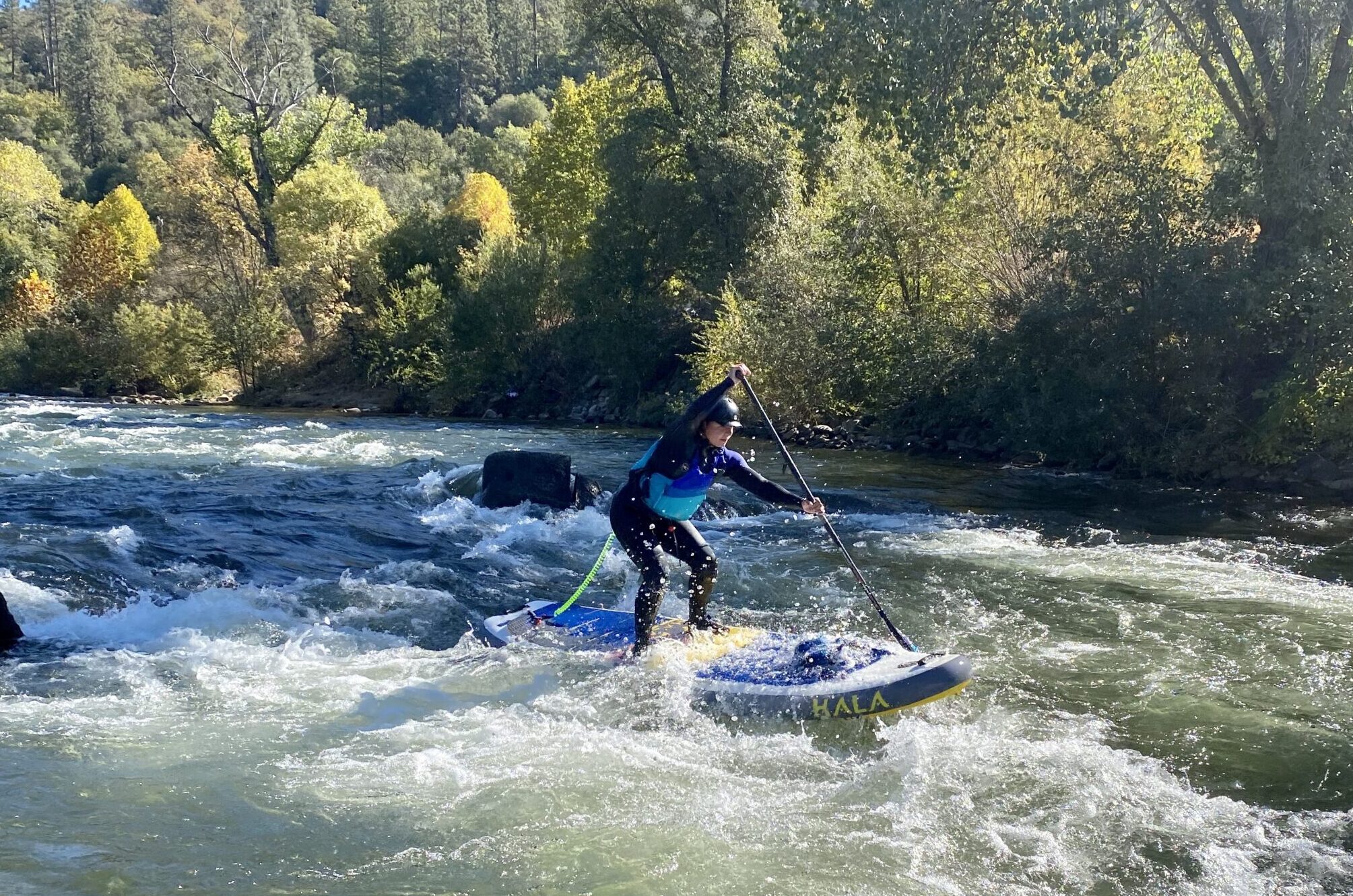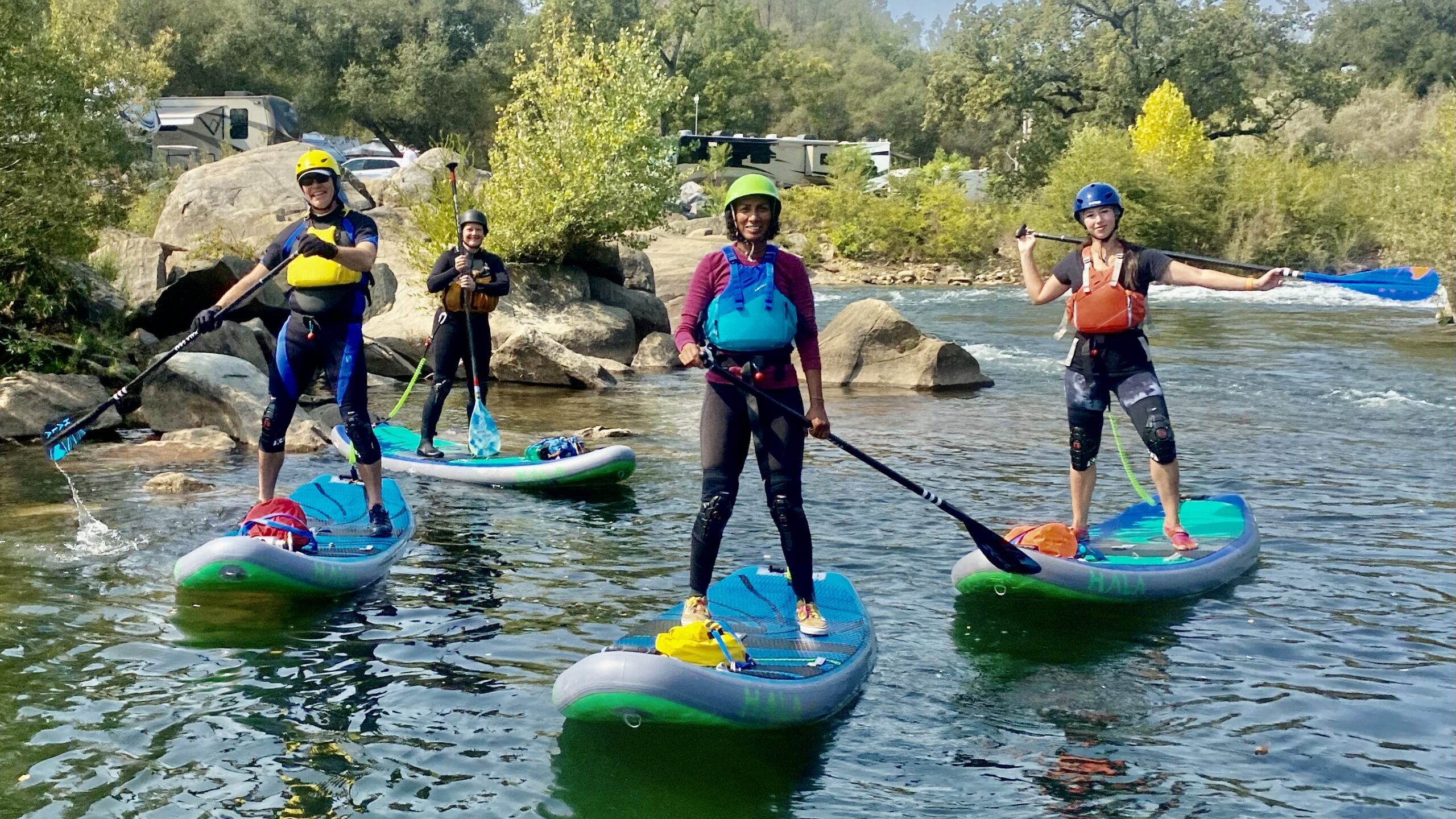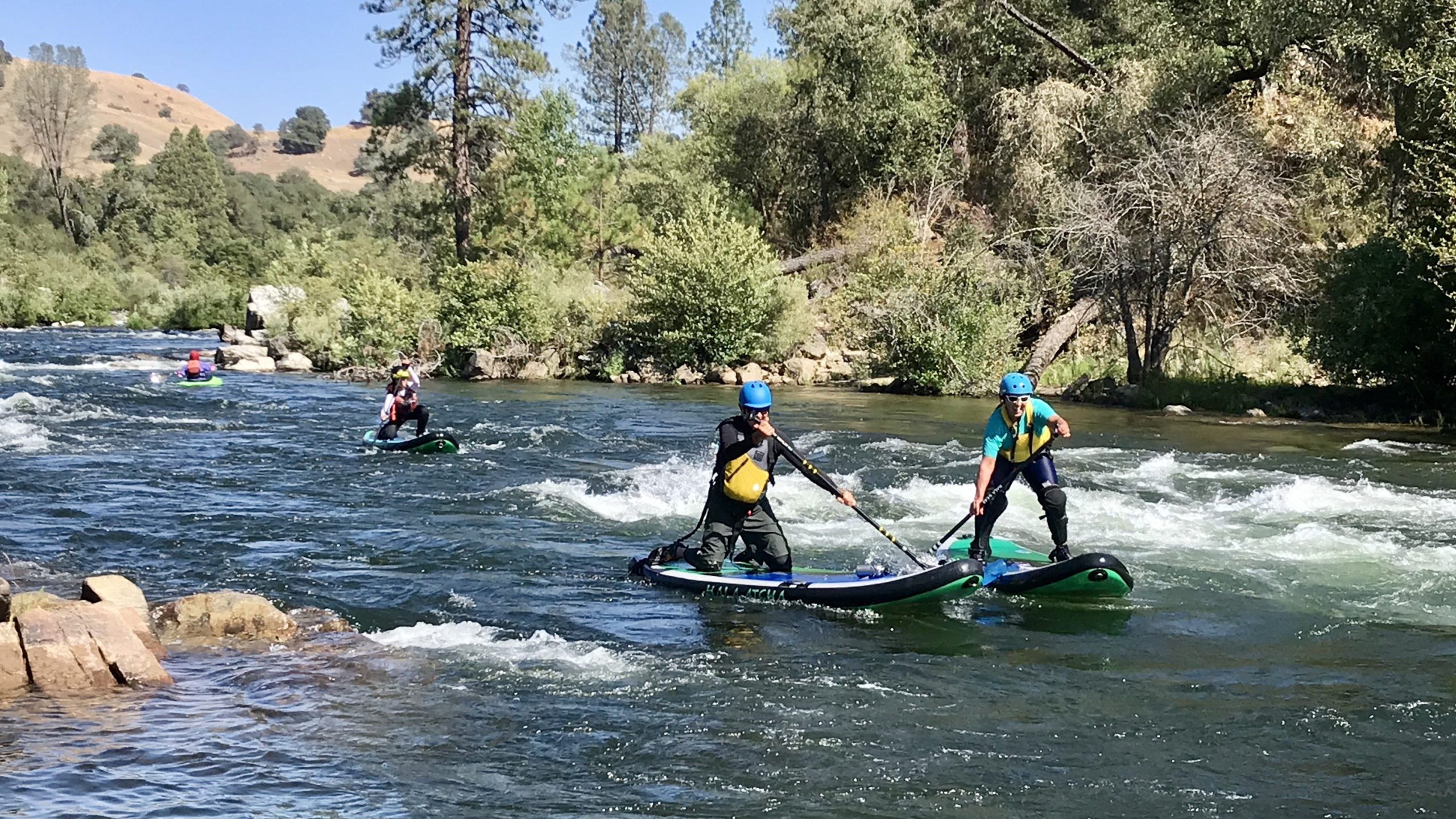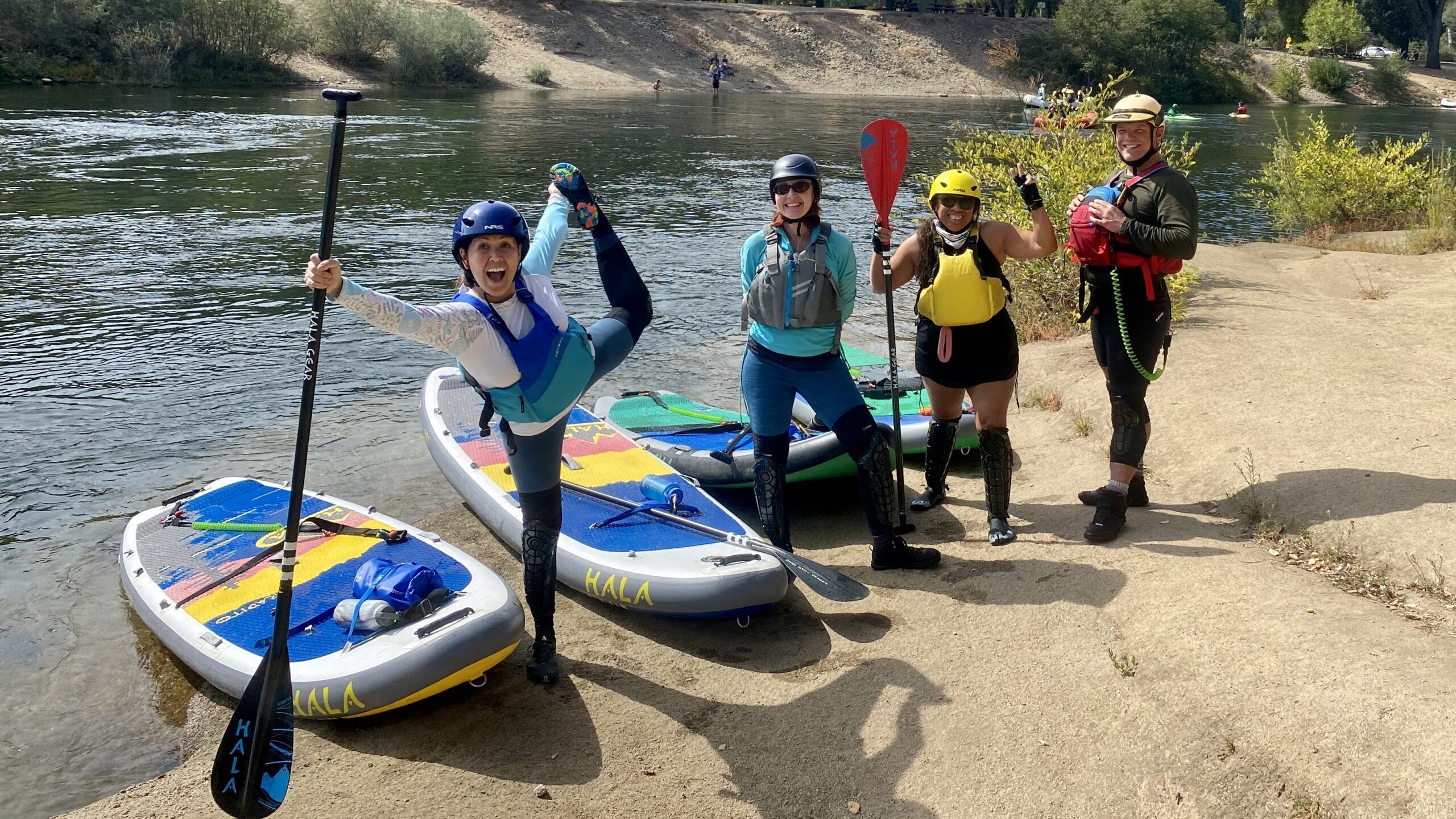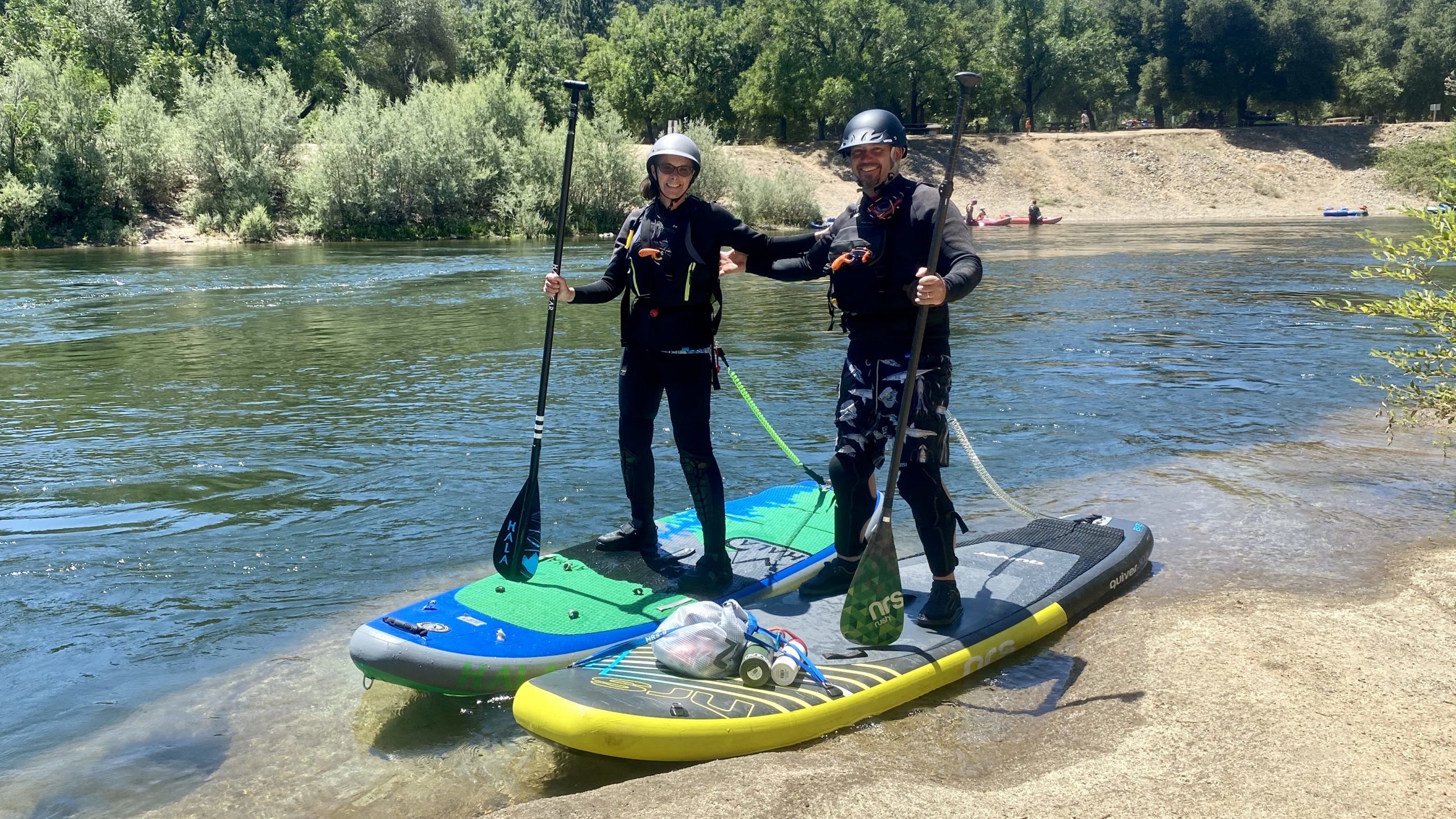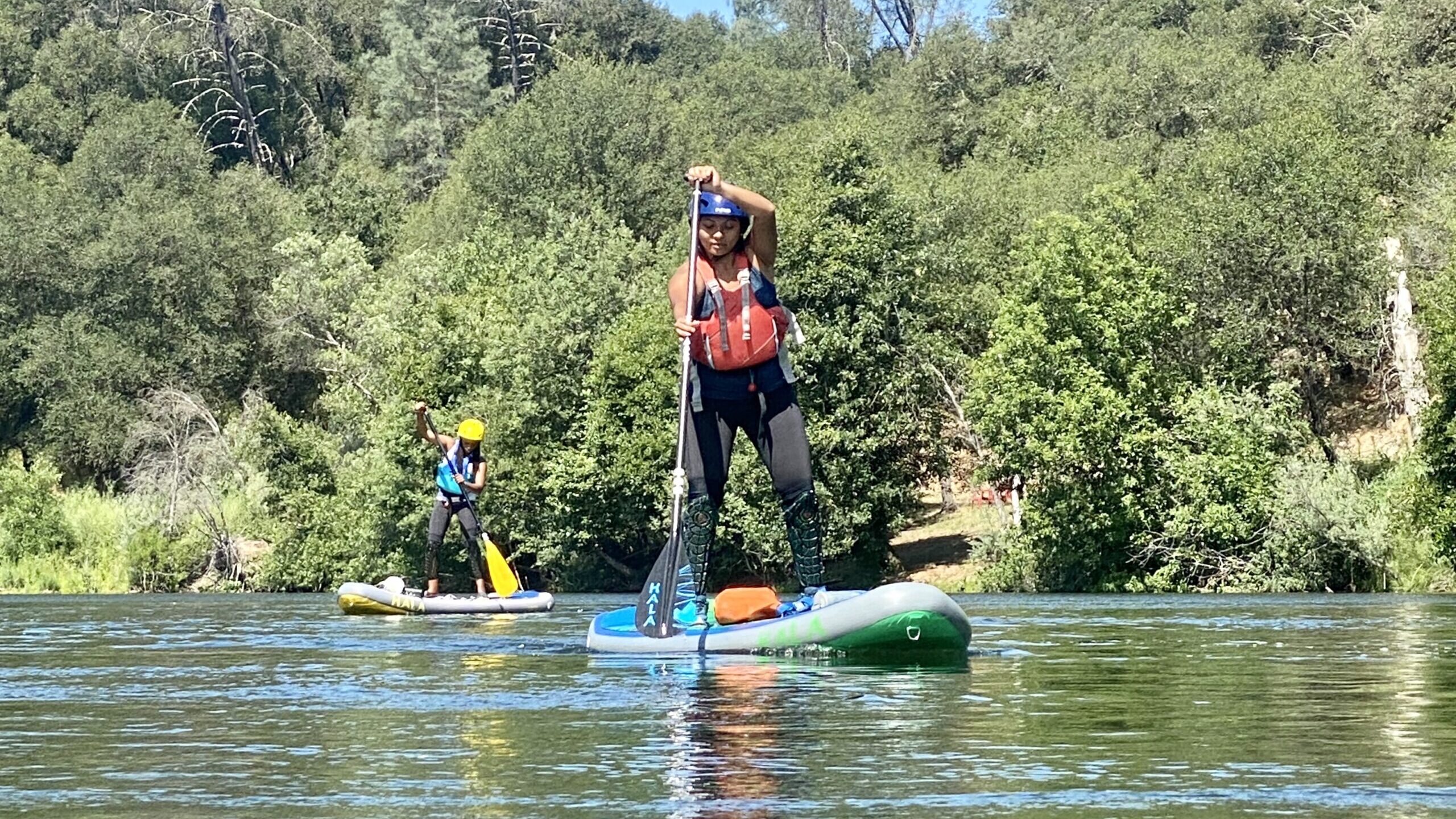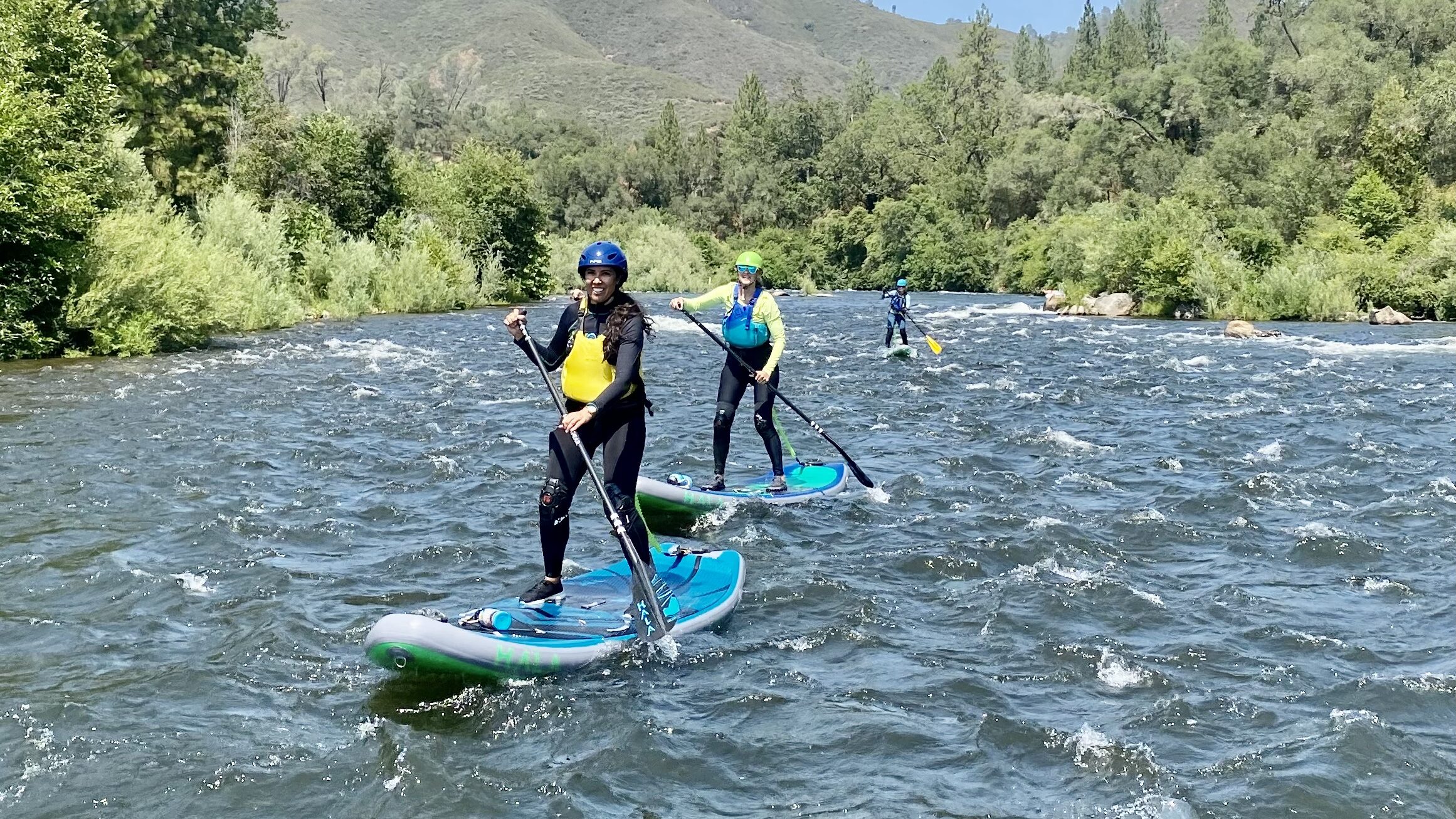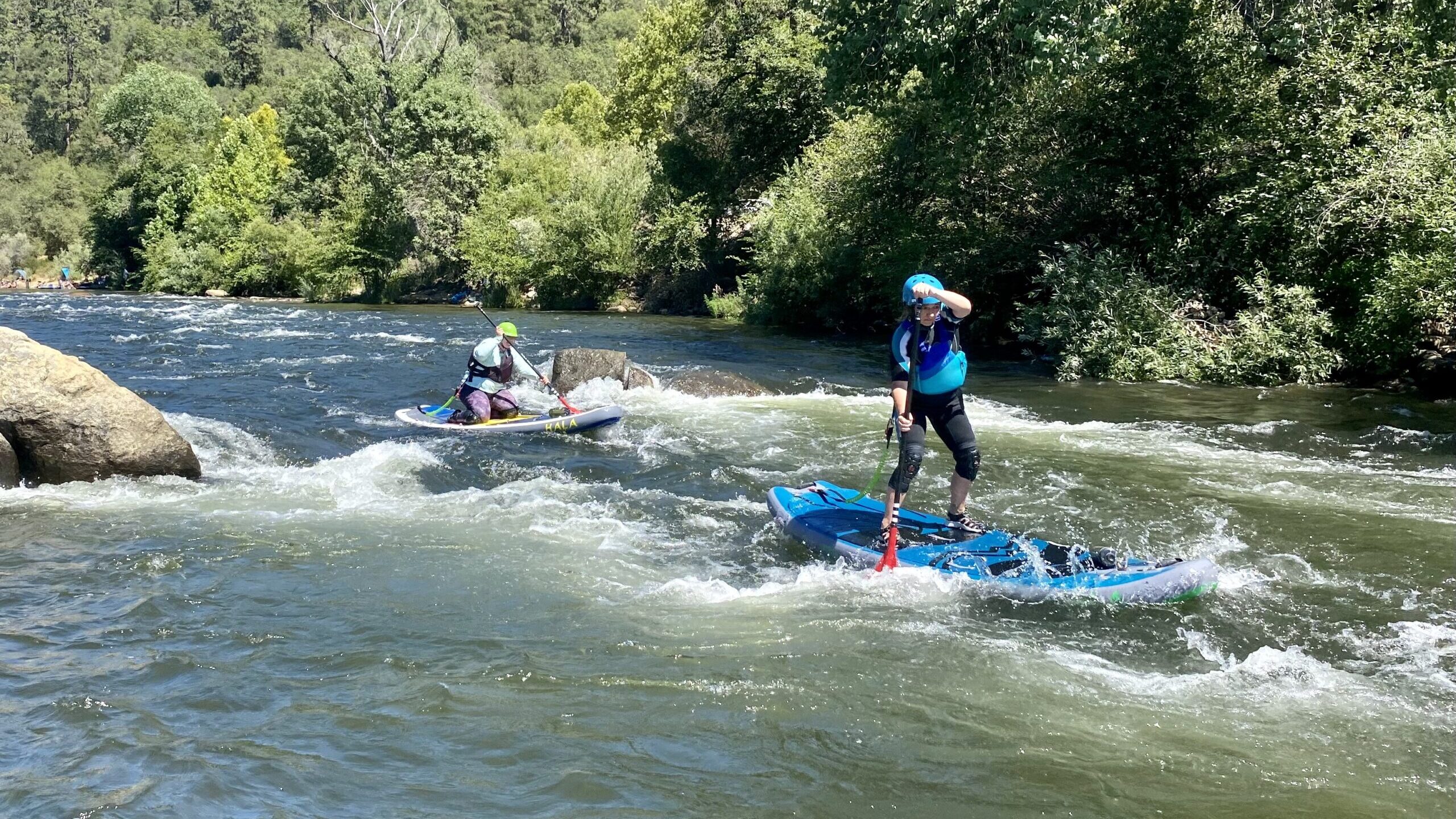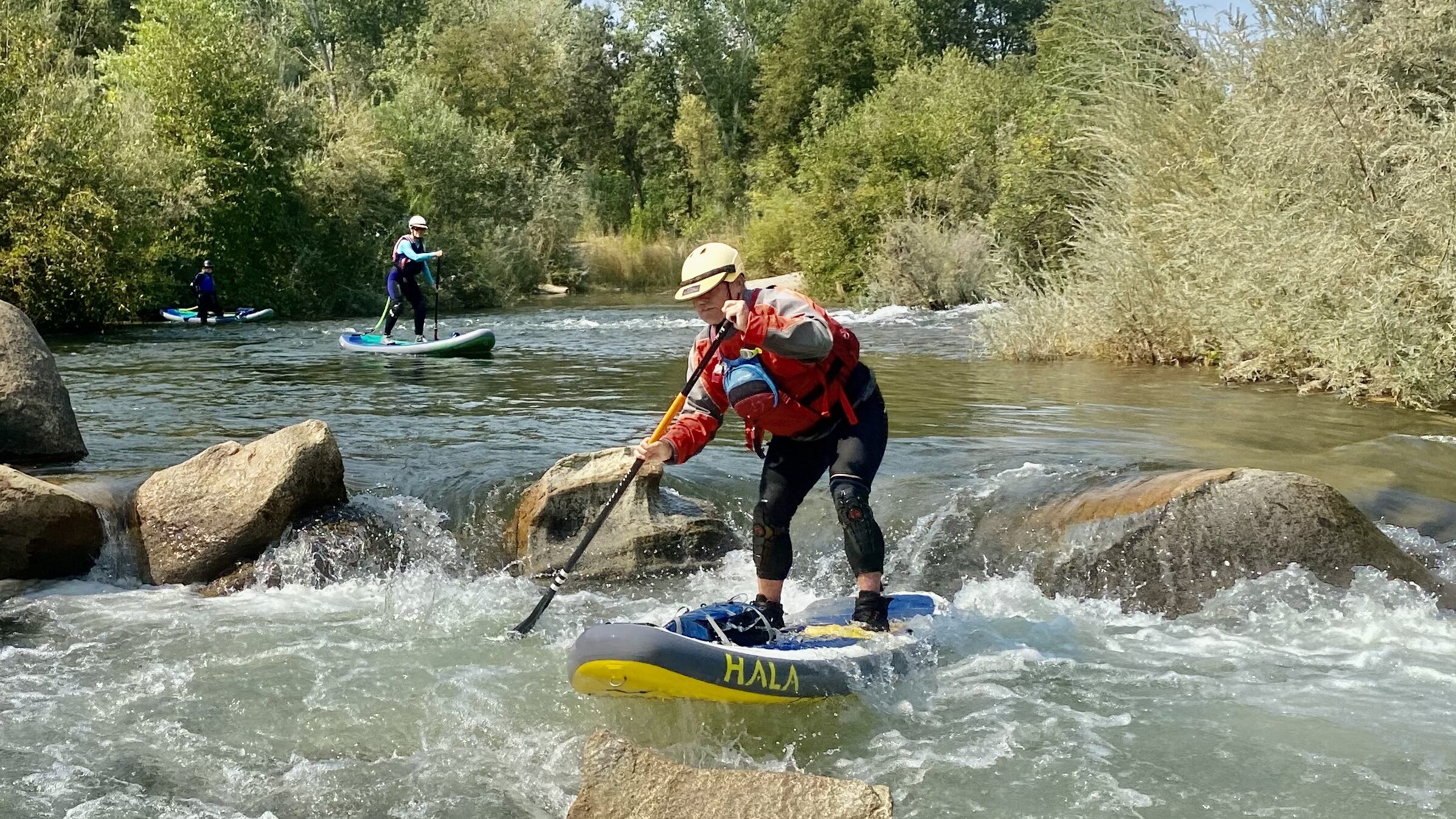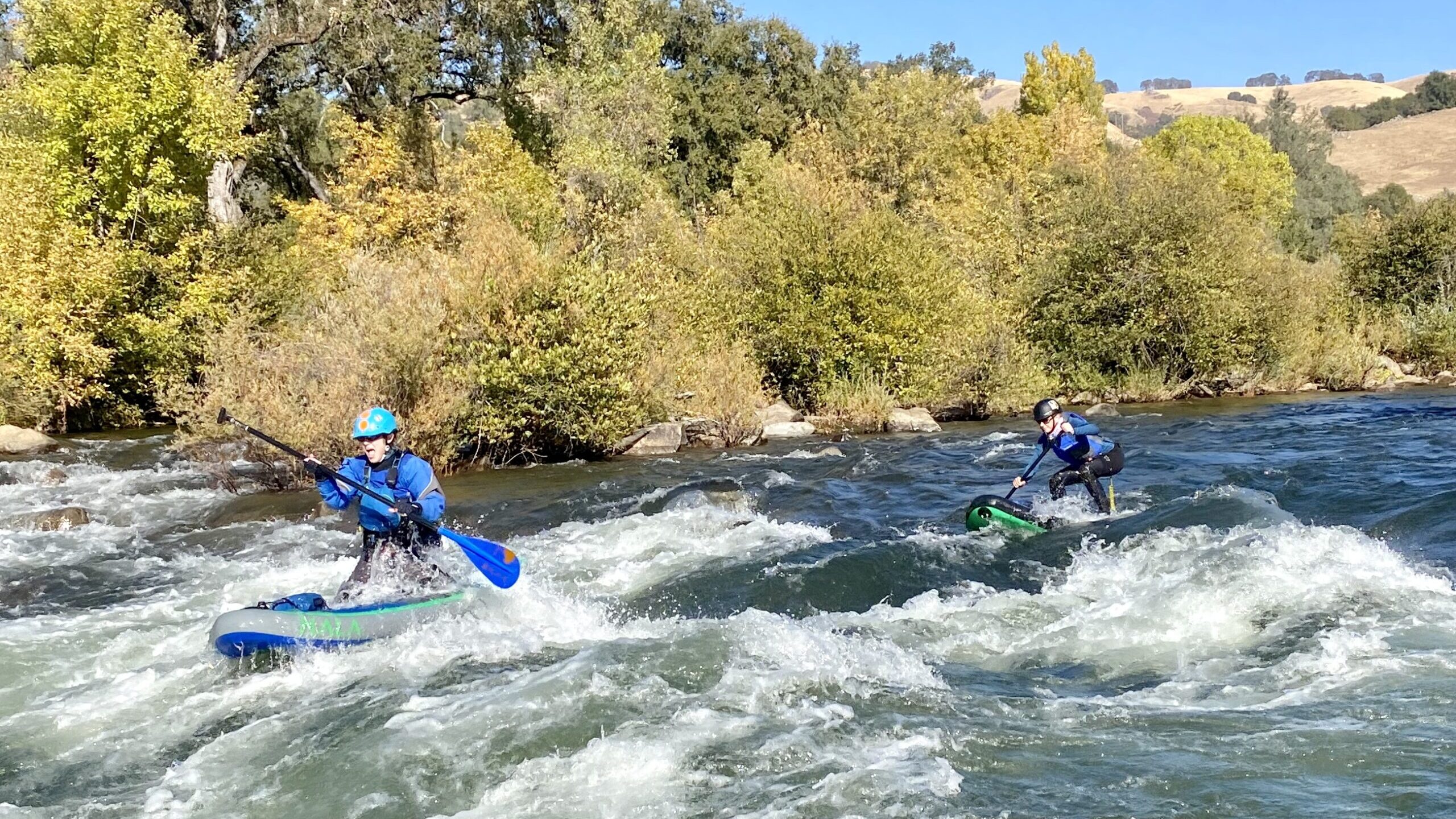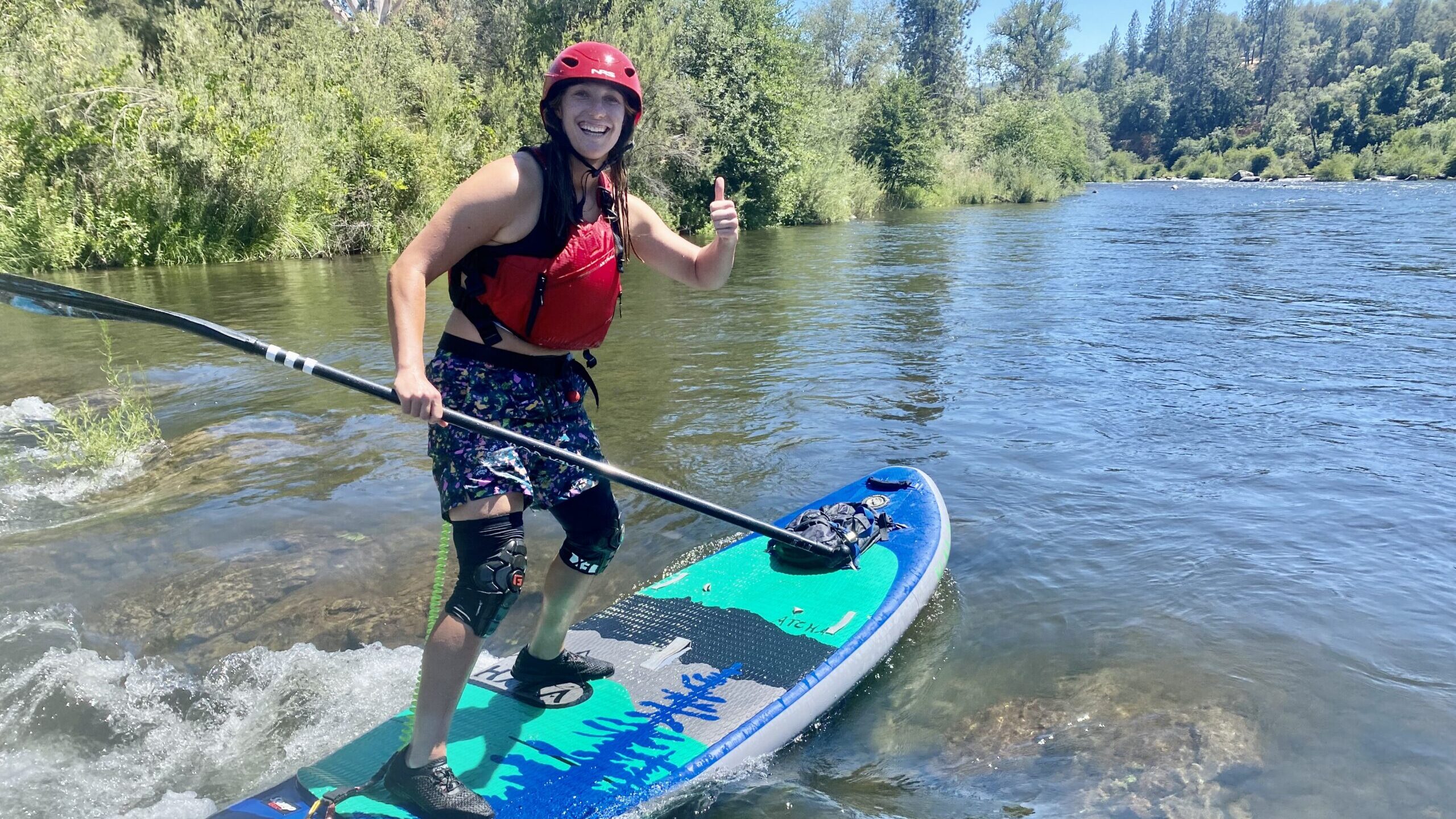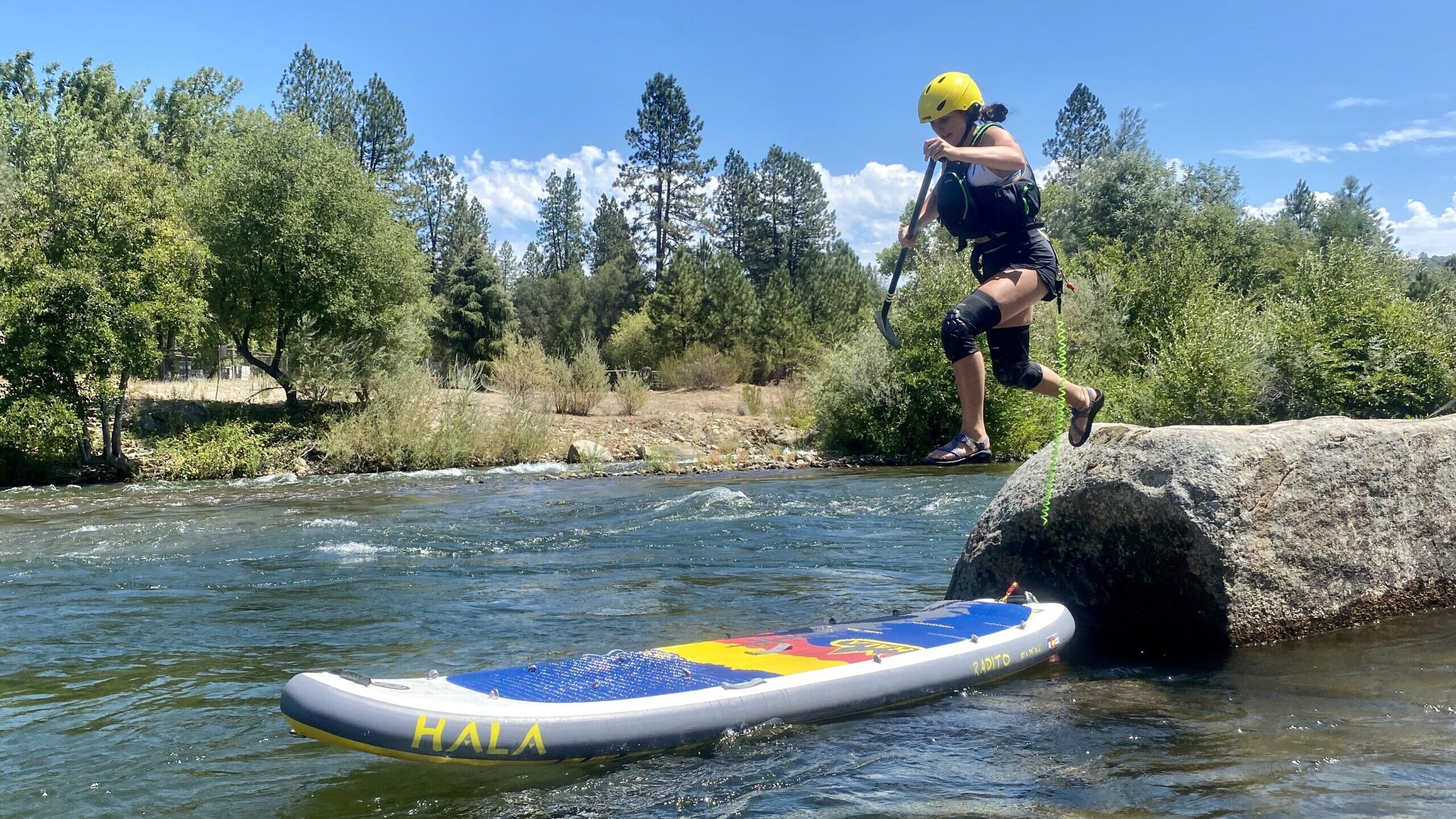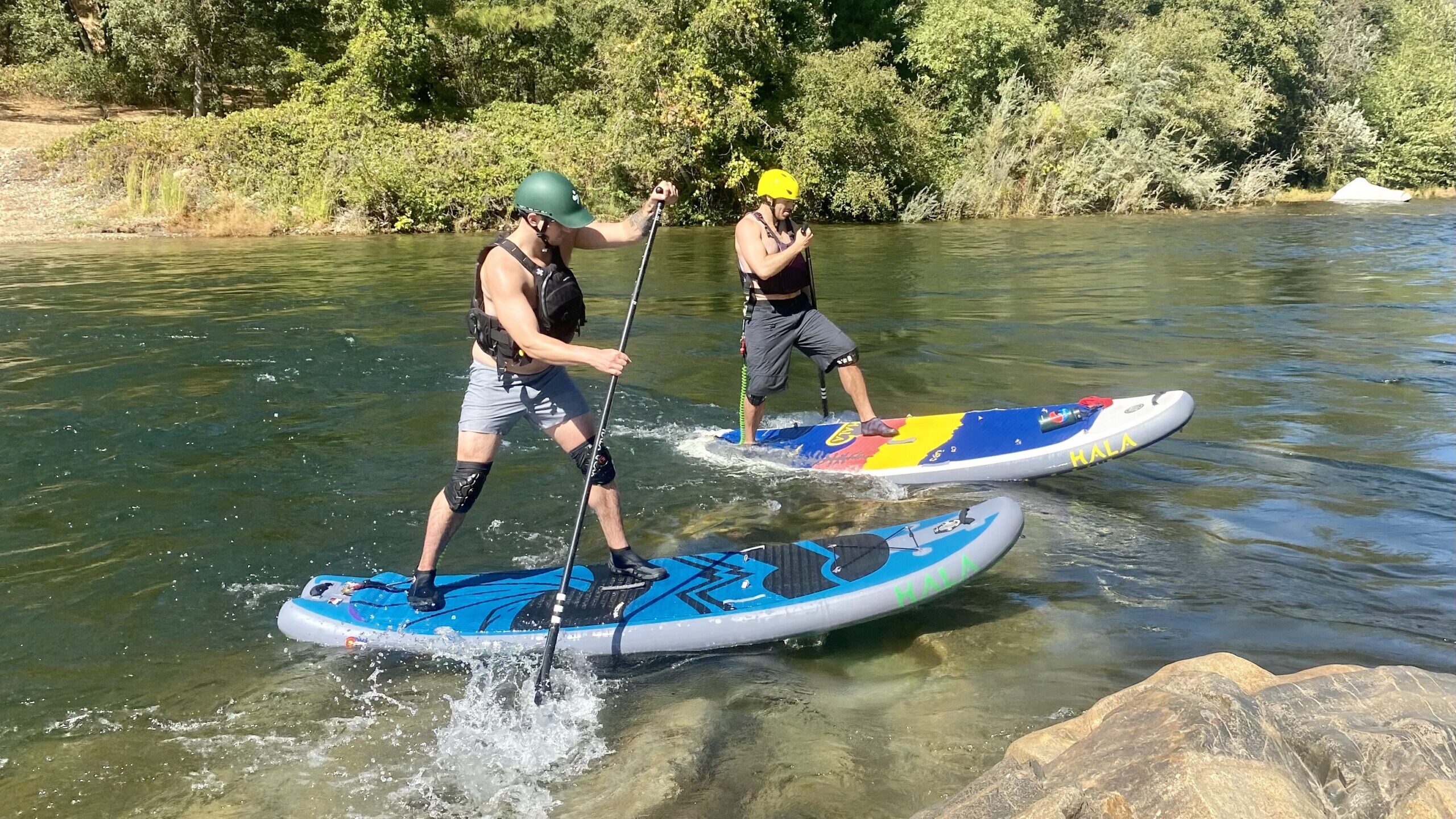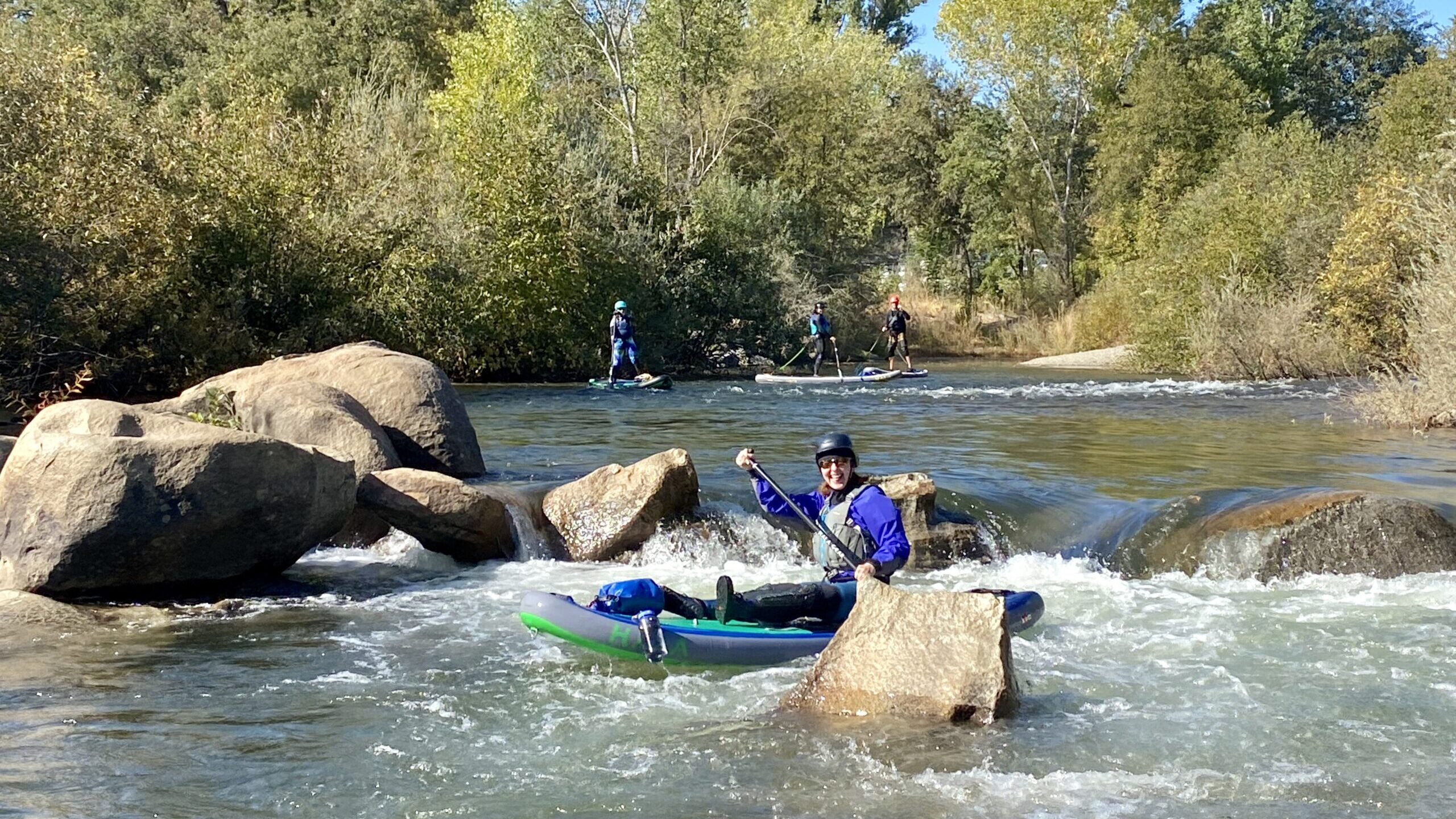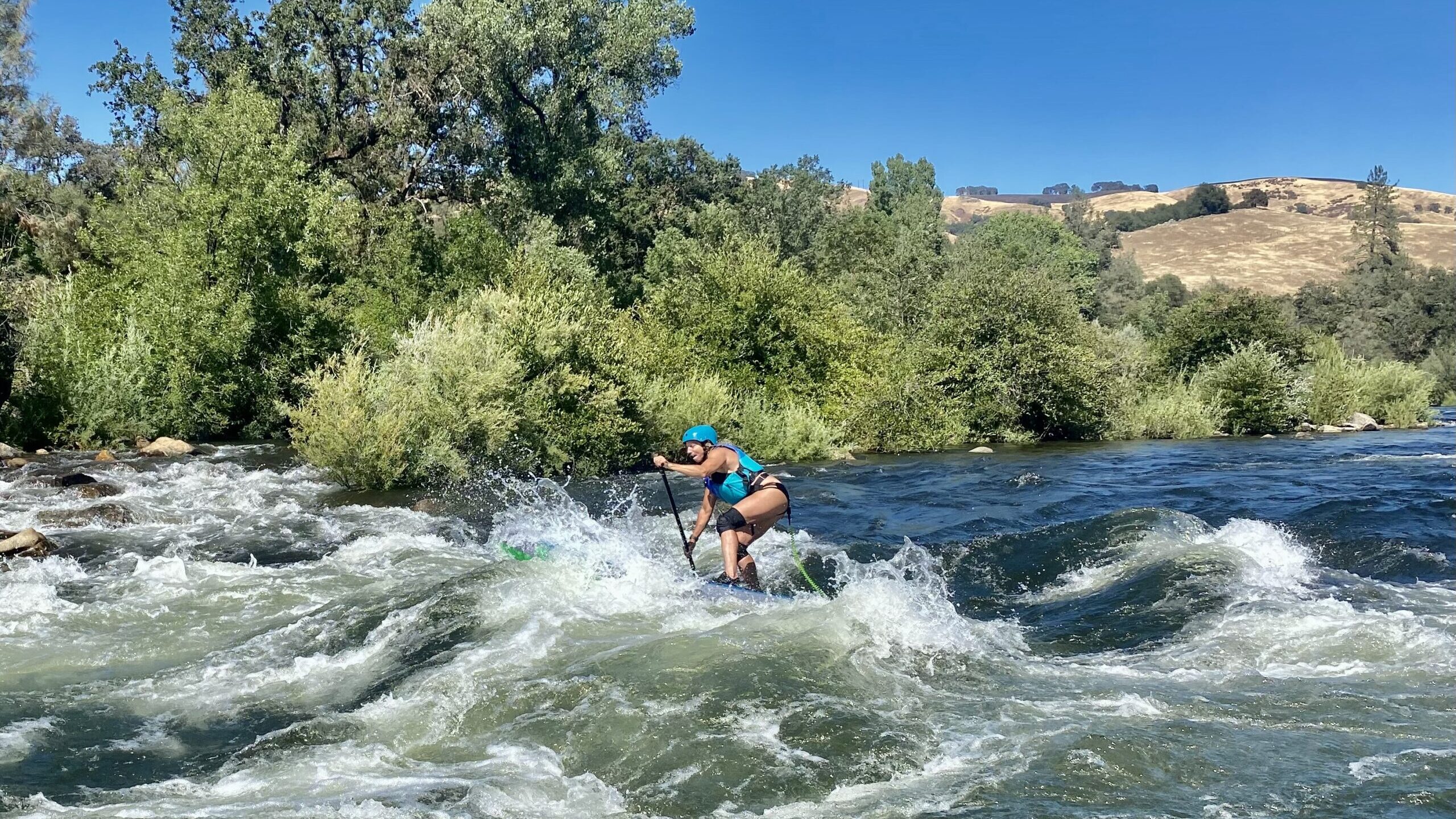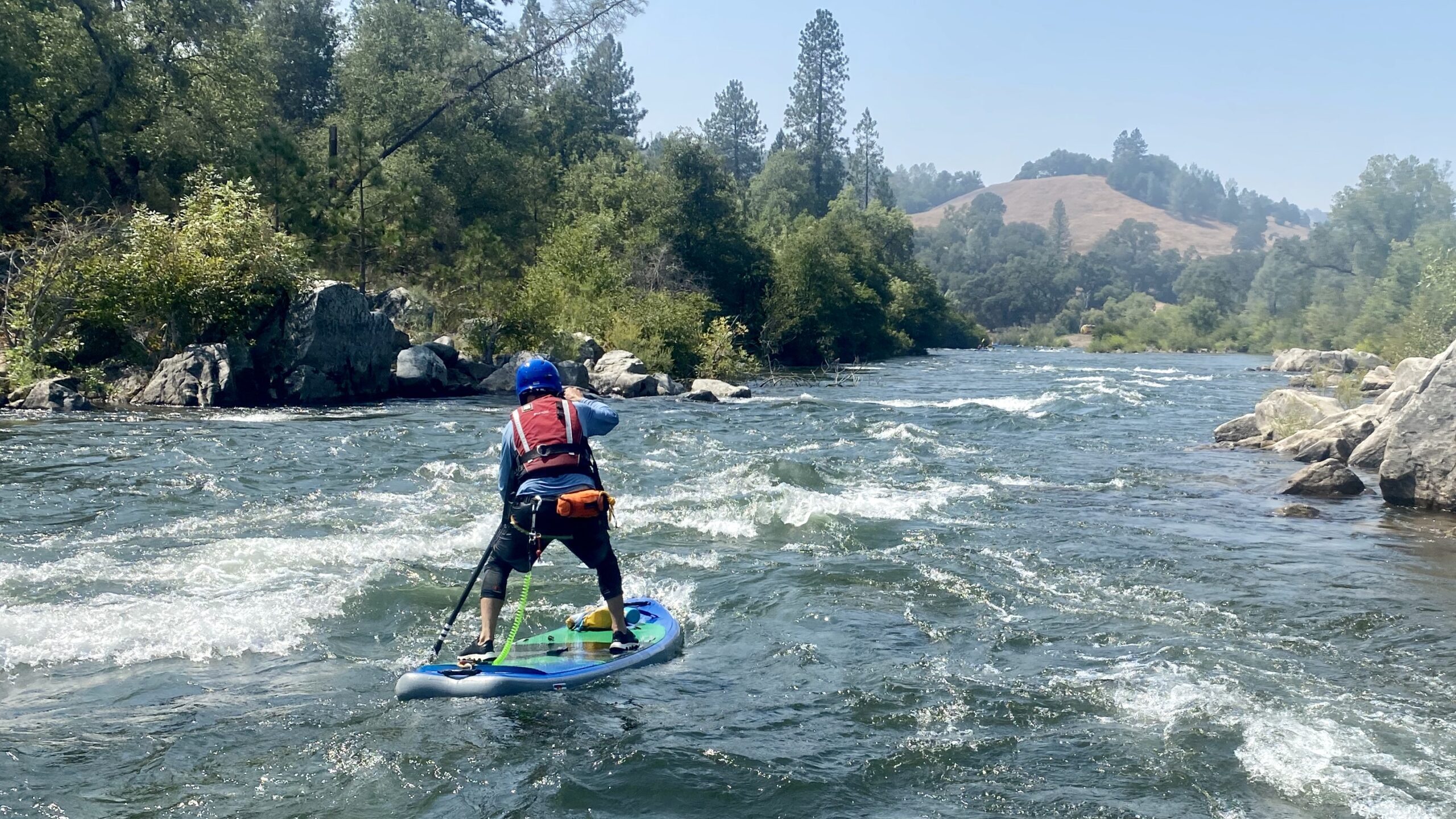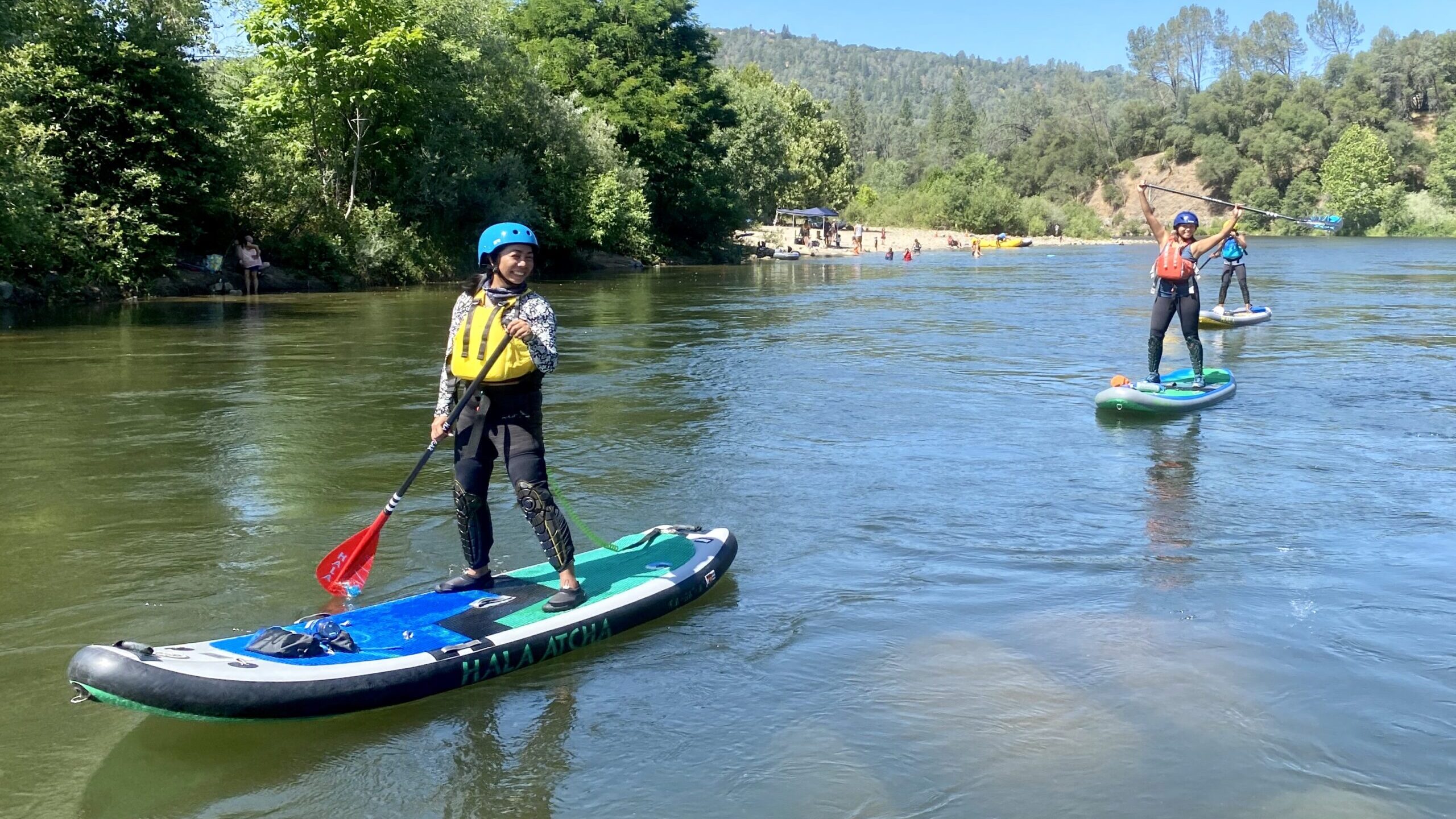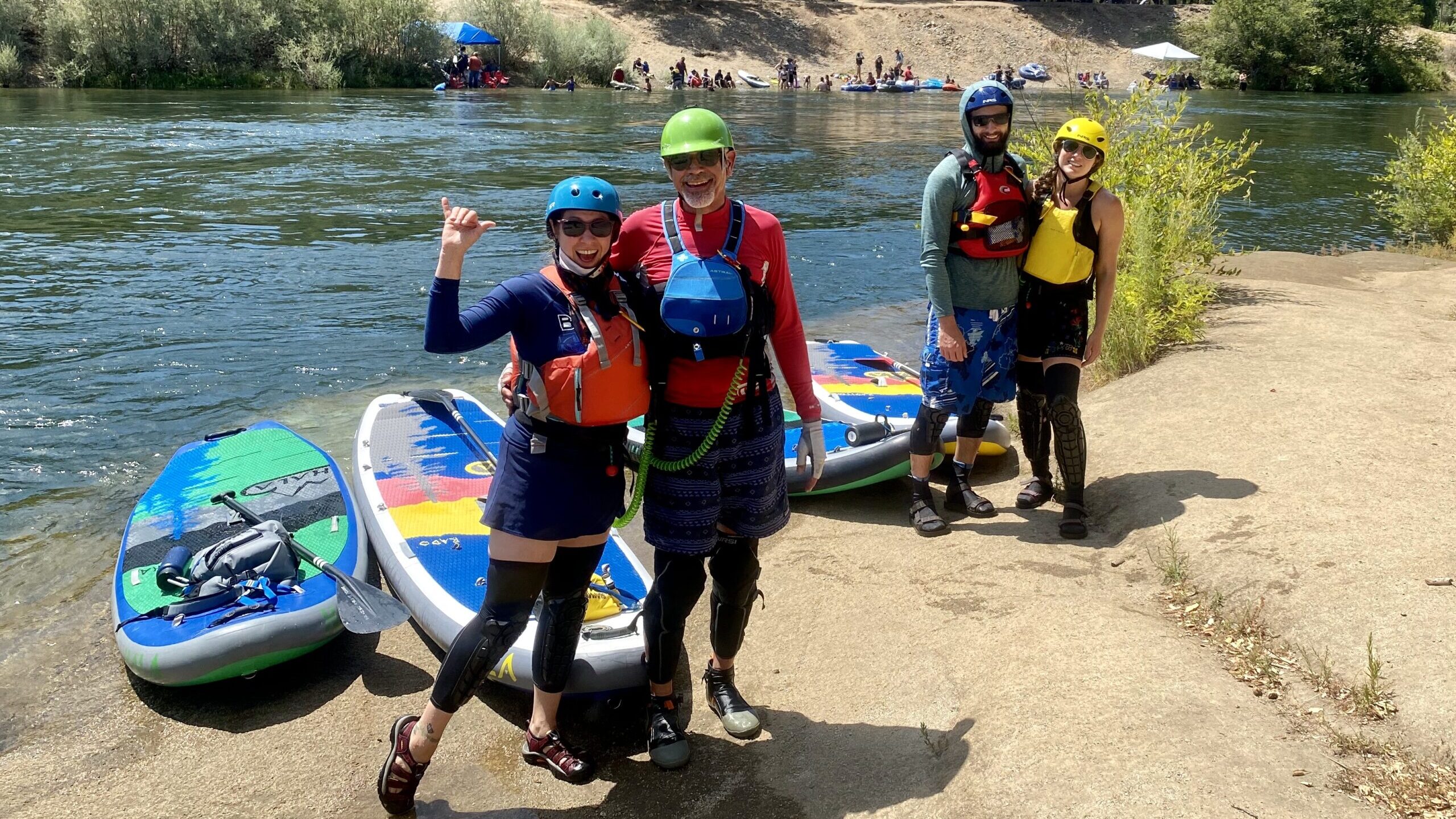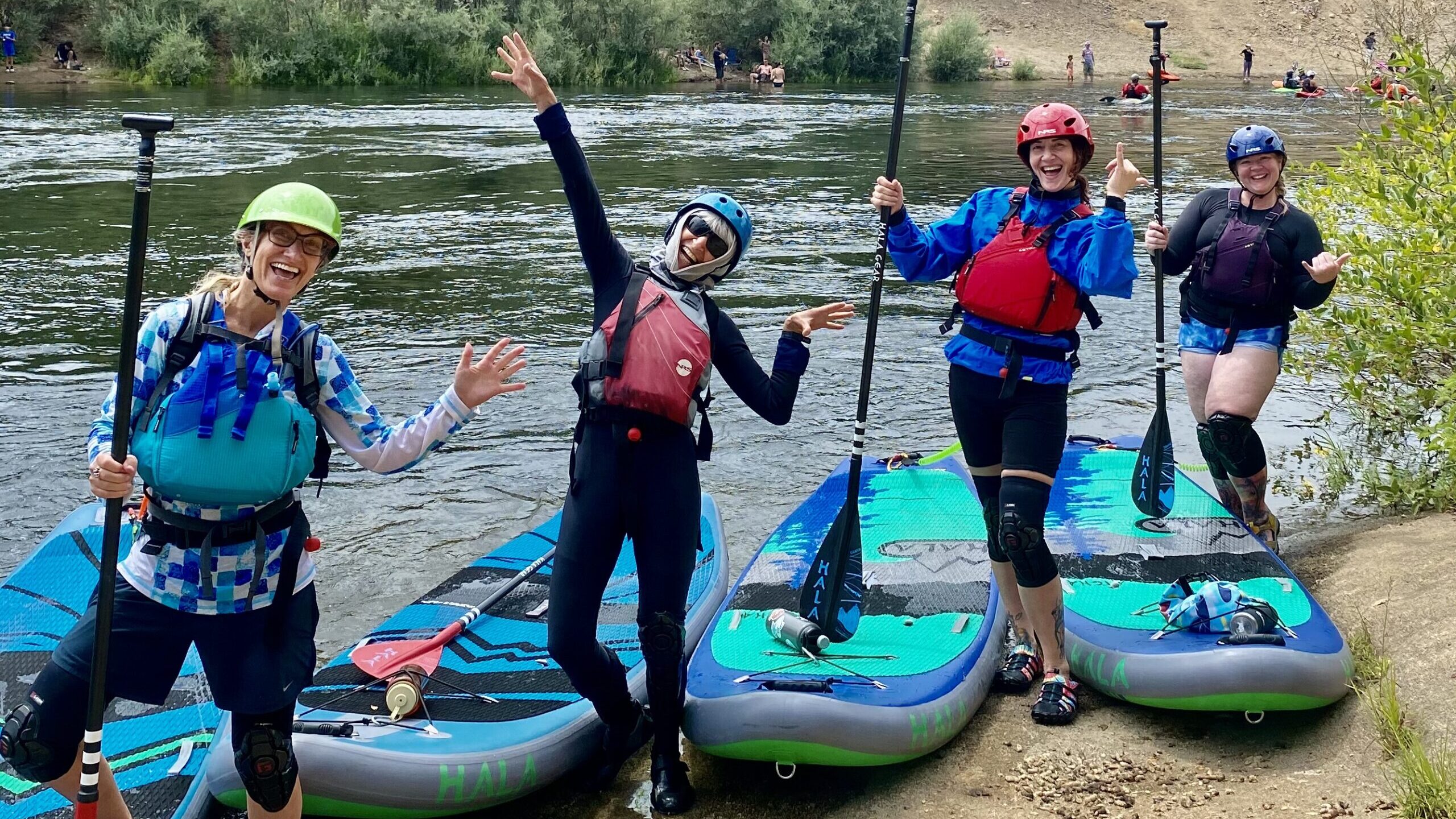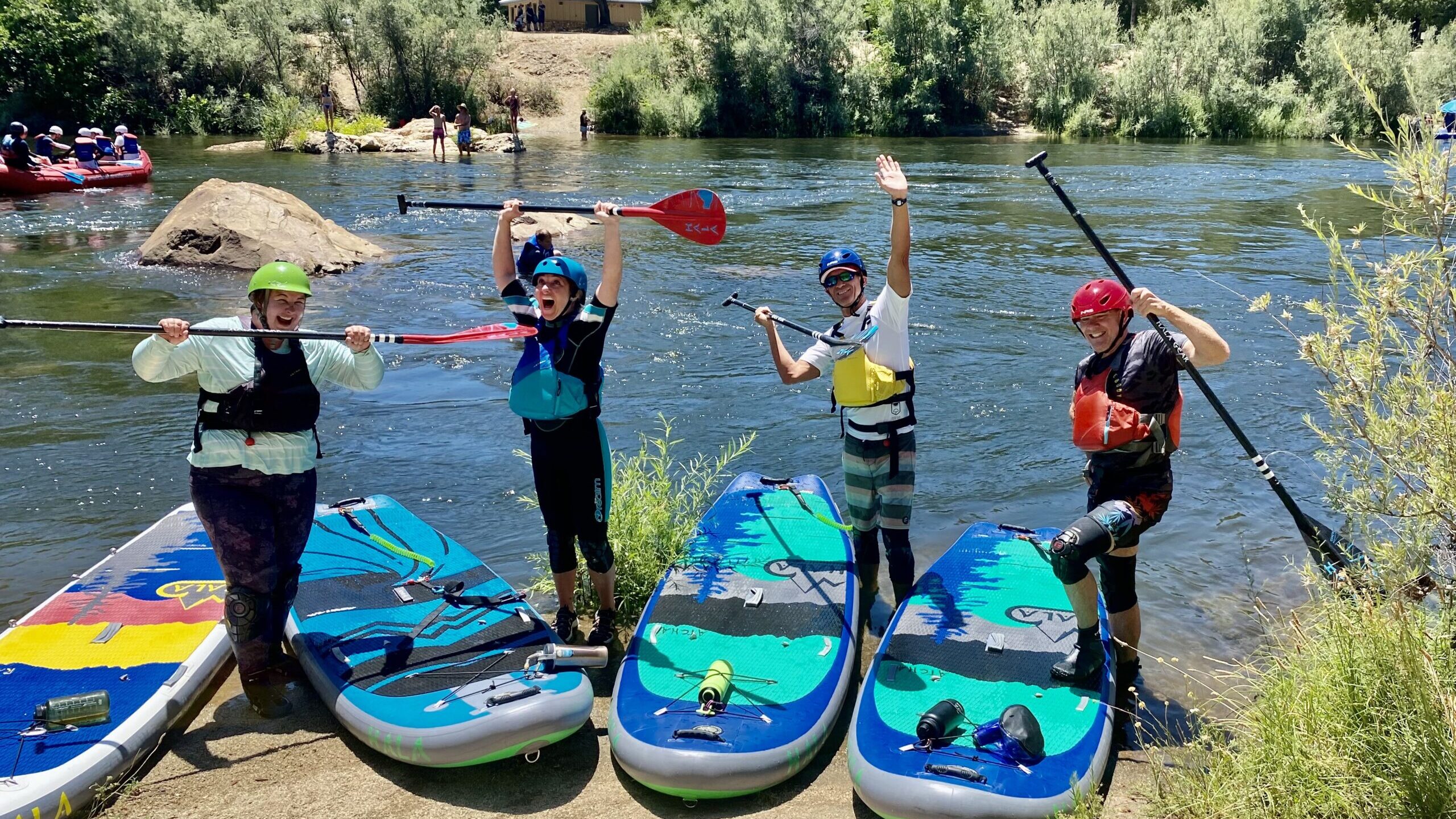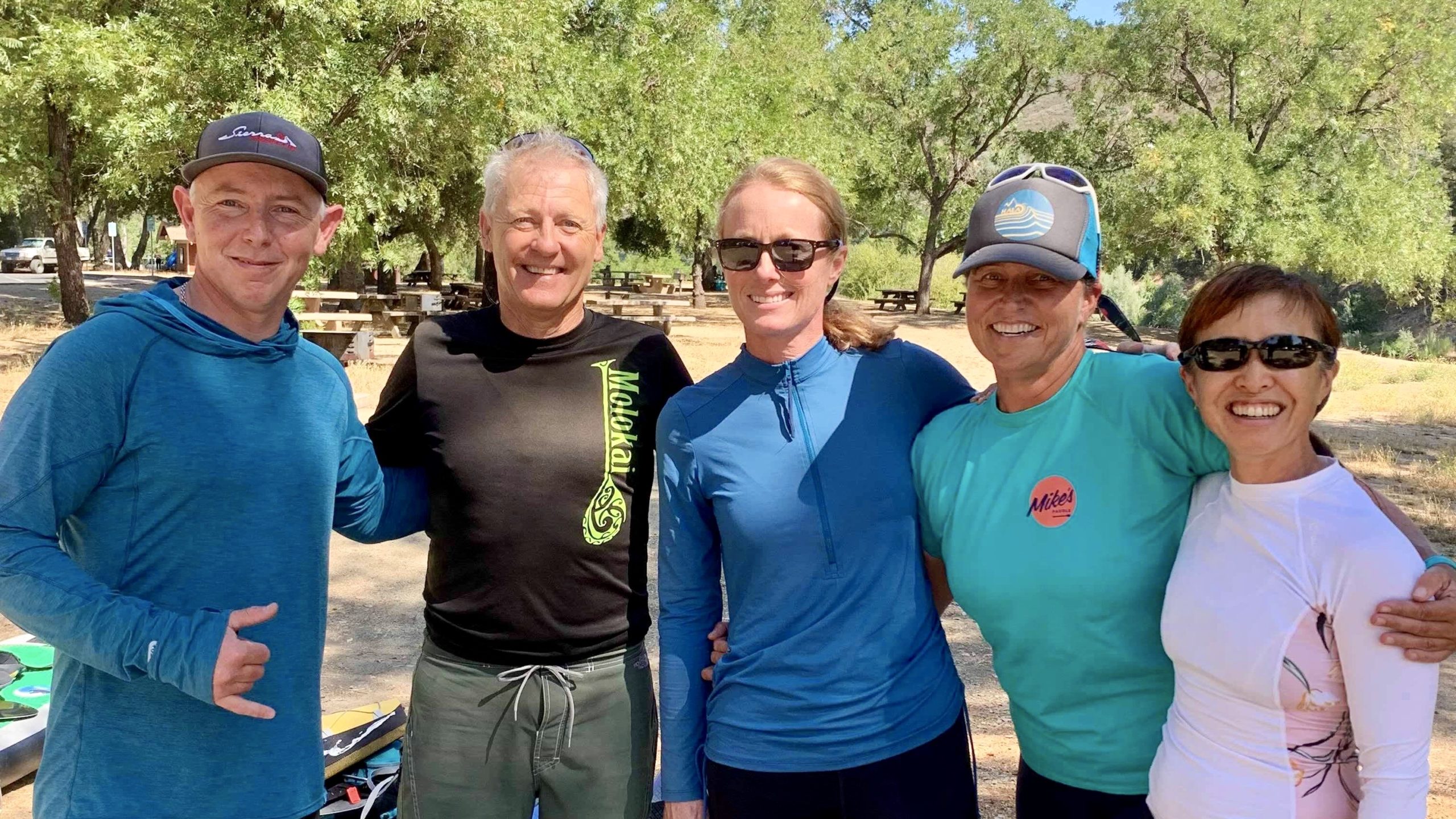Interested in riding a SUP on the river? Want to learn how to shred rapids on your board? I would love to be your coach! Come take a class with me, and I’ll help you achieve your paddling goals!
Register for a Class
If you would like to schedule a class click on the ‘Sign-up’ button and complete the on-line form. Please includes dates or timeframe as well as details of your paddling experience. A booking link will be emailed separately to provide payment and complete the registration process.
I offer river SUP classes in association with California Watersport Collective on the South Fork of the American River. The river flows through the Coloma Valley located in the heart of California’s gold country, about 1 hour Northeast of Sacramento and 1.5 hours West of South Lake Tahoe.
Choose from three different levels of group classes with established curriculum, or a private lesson specifically tailored to your paddling goals. All Prices are per person and subject to an 8% Government Use and Service Fee.
What to Bring
Paddling clothing appropriate for conditions
Sturdy river shoes or booties, socks appropriate for water temperature
Sunscreen & snacks
Water bottle with carabiner
What to Wear
Dry suit if air temp < 65 deg Wet suit if air temp is 65-85 deg Swimwear, rash guard, board shorts, spandex bottoms if air temp > 85 deg
The River Store offers a convenient option for wet suit and dry suit rentals
Equipment Provided
River SUP board and paddle
Whitewater helmet and PFD
Releasable leash and knee pads
Use of personal river gear is subject to pre-approval
Documentation
Please complete the following online form ahead of the class
Participant Release of Liability
Classification of Whitewater
Fast moving water with riffles and small waves. Few obstructions, all obvious and easily missed with little training. Risk to swimmers is slight; self-rescue is easy.
Straightforward rapids with wide, clear channels which are evident without scouting. Occasional maneuvering may be required, but rocks and medium-sized waves are easily missed by trained paddlers. Swimmers are seldom injured and group assistance, while helpful, is seldom needed. Rapids that are at the upper end of this difficulty range are designated “Class II+”.
Rapids with moderate, irregular waves which may be difficulty to avoid and which can swamp an open canoe. Complex maneuvers in fast current and good boat control in tight passages or around ledges are often required; large waves or strainers may be present but are easily avoided. Strong eddies and powerful current effects can be found, particularly on large-volume rivers. scouting is advisable for inexperienced parties. Injuries while swimming are rare; self-rescue is usually easy but group assistance may be required to avoid long swims. Rapids that are at the lower or upper end of this difficulty range are designated “Class III-“ or “Class III+” respectively.
Intense, powerful but predictable rapids requiring precise boat handling in turbulent water. Depending on the character of the river, it may feature large, unavoidable waves and holes or constricted passages demanding fast maneuvers under pressure. A fast, reliable eddy turn may be needed to initiate maneuvers, scout rapids, or rest. Rapids may require “must” moves above dangerous hazards. Scouting may be necessary the first time down. Risk of injury to swimmers is moderate to high, and water conditions may make self-rescue difficult. Group assistance for rescue is often essential but requires practiced skills. A strong eskimo roll is highly recommended. Rapids that are at the lower or upper end of this difficulty range are designated “Class IV-“ or “Class IV+” respectively.
Extremely long, obstructed, or very violent rapids which expose a paddler to added risk. Drops may contain large, unavoidable waves and holes or steep, congested chutes with complex, demanding routes. Rapids may continue for long distances between pools, demanding a high level of fitness. What eddies exist may be small, turbulent, or difficult to reach. At the high end of the scale, several of these factors may be combined. Scouting is recommended but may be difficult. Swims are dangerous, and rescue is often difficult even for experts. A very reliable eskimo roll, proper equipment, extensive experience, and practiced rescue skills are essential. Because of the large range of difficulty that exists beyond Class IV, Class 5 is an open-ended, multiple-level scale designated by class 5.0, 5.1, 5.2, etc… each of these levels is an order of magnitude more difficult than the last.
These runs have almost never been attempted and often exemplify the extremes of difficulty, unpredictability and danger. The consequences of errors are very severe and rescue may be impossible. For teams of experts only, at favorable water levels, after close personal inspection and taking all precautions. After a Class VI rapids has been run many times, its rating may be changed to an appropriate Class 5.x rating.

